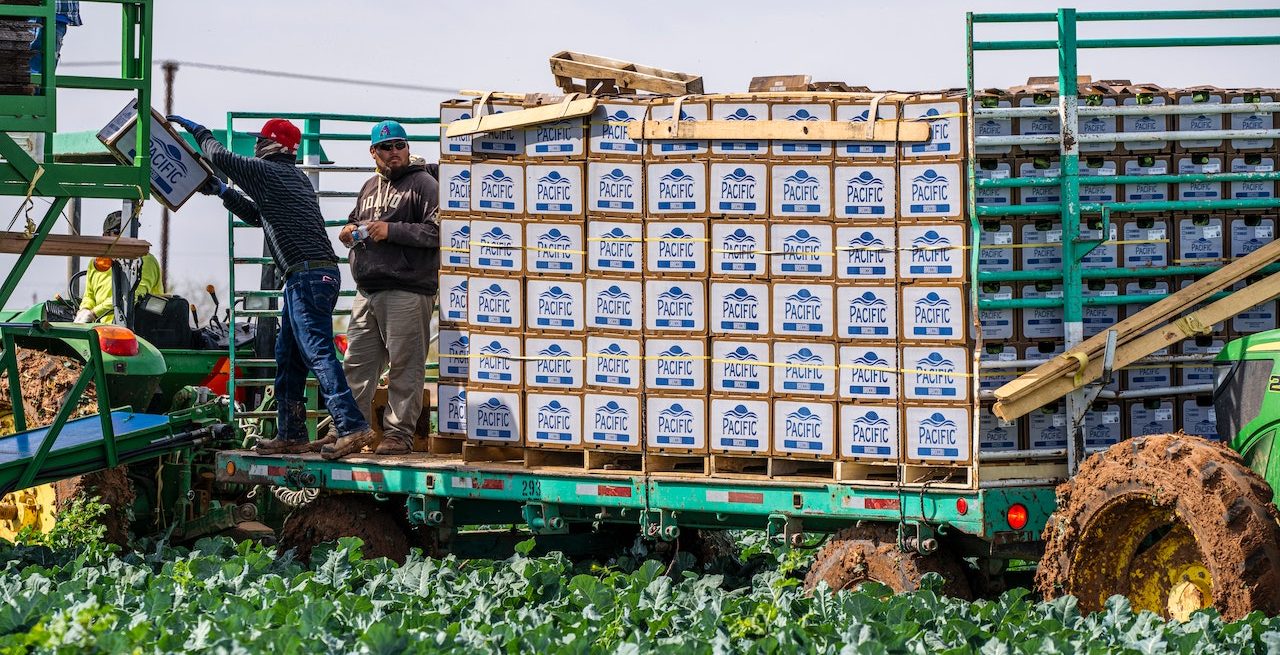Supply Chain Transparency Can Make Your Restaurant Safer, Boost Key Metrics
4 Min Read By Paul Damaren
What if I told you that you could solve a variety of your problems by improving your supply chain transparency? This one effort can help your restaurant ensure you’re aligned with suppliers that prioritize safety and quality efforts. It can also help you identify – and mitigate – a variety of risks. Supply chain transparency can provide vital information about suppliers’ environmental, social, and governance (ESG) initiatives. And it can help protect your guests, reputation, and bottom line.
While it’s important for restaurants to serve delicious meals, that alone is not enough anymore. Customers want to know where their food is coming from. They want to know what safety and quality protocols your suppliers practice to ensure that food is safe from point of origin to point of consumption. And they care about social and environmental impact: ethically treated animals, sustainability, fair labor practices, DEI, and more.
Restaurants and other food businesses have, as a result, put more focus on increasing supply chain transparency. Doing so helps these brands:
- Reduce risk across the entire supply chain. Any safety breach – mishandled foods, contamination at a farm, employees working with contagious norovirus, human error, broken equipment, and more – can harm your foods, guests, and business. While you may be adhering to best practice food safety protocols, are all your suppliers prioritizing safety and quality, as well? Remember: you’re only as strong as your weakest link. Greater supply chain transparency means that restaurant brands can identify and mitigate any potential risks, keeping their customers and businesses safer.
- Prioritize ESG initiatives. Chipotle famously prioritizes ESG. Their ingredients are responsibly sourced, prioritizing people, animals, and the environment. They prioritize transparency, and regularly spotlight their progress. They believe that greater awareness of where food comes from can have a far-reaching impact, and customers appreciate their efforts. Yum Brands’ Recipe for Good reflects the organization’s ESG priorities, including social responsibility, risk management and sustainable stewardship of their people, food and planet. It’s nice to see that more restaurant brands are committing to ESG efforts and are working with suppliers whose ESG values mirror their own. To ensure that their suppliers are properly certified – in terms of safety protocols and ESG efforts – many restaurants are using tech tools to better manage their suppliers’ certification status. This helps brands feel confident that they’re only working with suppliers that prioritize safety, quality, transparency, and compliance, as well as greener and cleaner practices.
- Improve supplier performance and resiliency. Digital solutions help organizations get accurate real-time data and feedback so they can act strategically to improve their operations, solve problems, boost safety and quality, increase accuracy, and reduce costs. Supply chain transparency creates resilient operations by providing valuable real-time data to brand leaders. Having a clear view of inventory, potential disruptors, and activity all along the supply chain allows companies to be more agile, flexible, responsive, and resilient.
- Help stop (or reduce) the spread of foodborne illness. One huge benefit of increasing supply chain transparency and traceability is that it can help stop the spread of foodborne illnesses. Suppose a head of lettuce is found to be contaminated. Supply chain transparency and traceability can track the source of the contamination, identify any other at-risk products, accurately locate where the produce was distributed, and immediately remove any potentially tainted items from restaurants and store shelves. Since food recalls can be extremely expensive, far-reaching, and damaging, this prompt action can save lives, minimize illnesses, and protect the reputation of all businesses involved.
- Make smarter decisions. Tech solutions with real-time capabilities gather data in one place for a single source of truth, providing analytics that help operators make smarter decisions. Reviewing and analyzing robust data allows brands to optimize their operations, reduce risks, anticipate disruptions, maximize performance, and more.
- Strengthen relationships with suppliers. Tech tools – like the cloud, quality management software, AI, and blockchain – are revolutionizing the restaurant industry, allowing brands to better communicate with suppliers and improve transparency across the supply chain. Disruptions happen daily. We’ve been inundated with transportation delays, extreme weather events, product shortages, recalls, and other challenges. Ongoing communication (and collaboration) with your suppliers is essential, as you work together to boost safety, quality, and compliance.
- Increase key metrics. Would it surprise you to know that boosting supply chain transparency can increase profits two to ten percent. It can also improve customer retention and loyalty. It costs five to seven times as much to attract a new customer than to keep an existing one, and a five-percent customer retention rate can increase profits by 25-95 percent. Increasing your supply chain transparency can help drive key metrics and elevate your bottom line.
- Drive industry-wide improvements. Imagine that more restaurant brands joined Chipotle, Yum, and others to boost supply chain transparency. Customers want to support restaurants with sustainably raised meat, locally grown produce, and that support fair trade, DEI, and eco-friendly practices. As more restaurants embrace this effort, we’ll help drive positive changes across the food industry.
Restaurants should proactively work to increase supply chain transparency – developing policies, setting goals, conducting audits, requiring supplier certification, and using tech tools to collect data. Transparency is no longer an option but a necessity – and a competitive advantage for brands that get on board.


